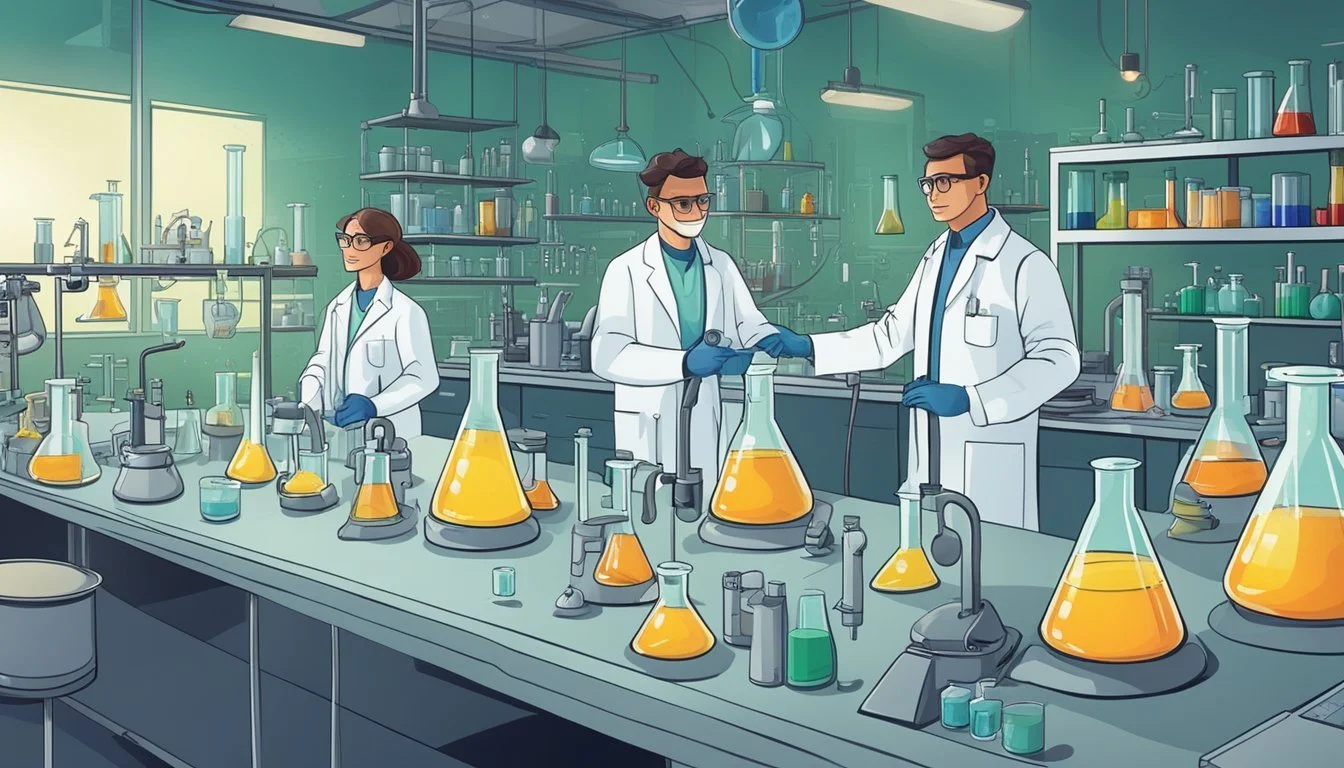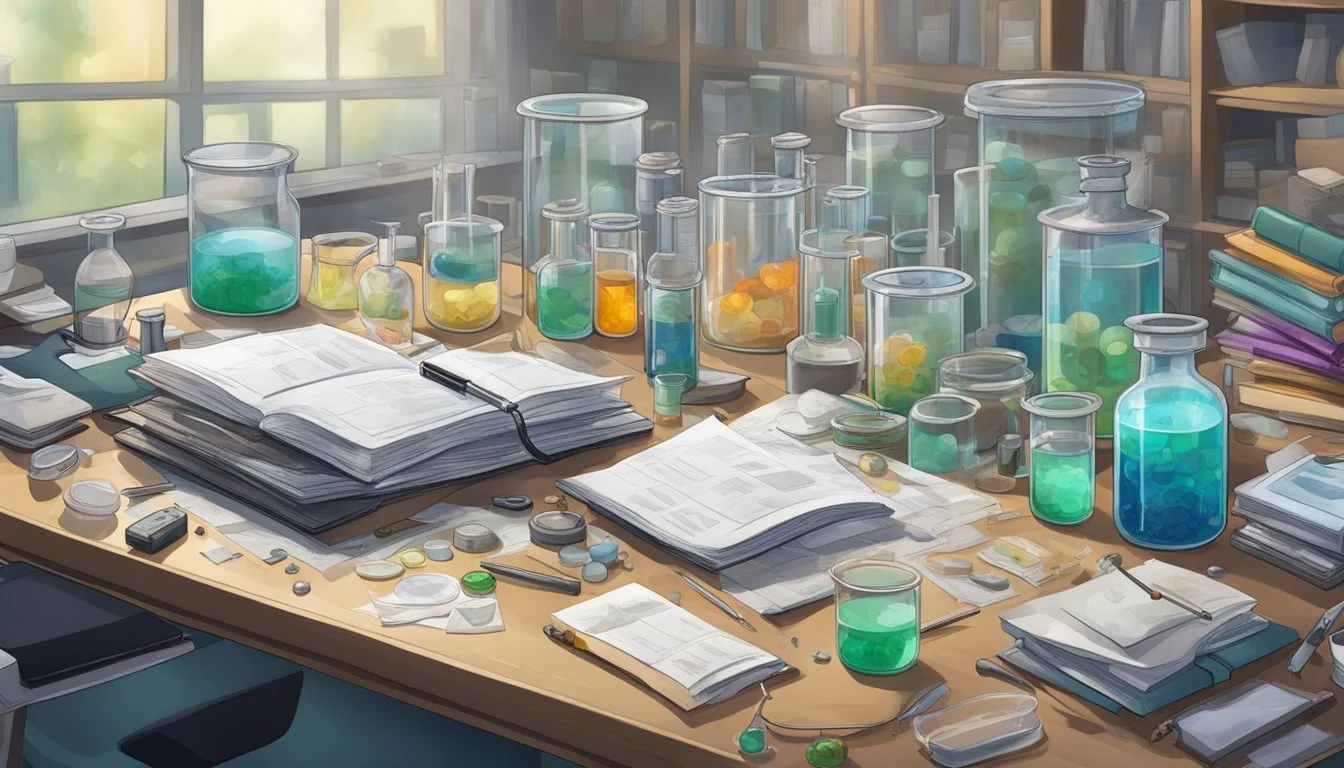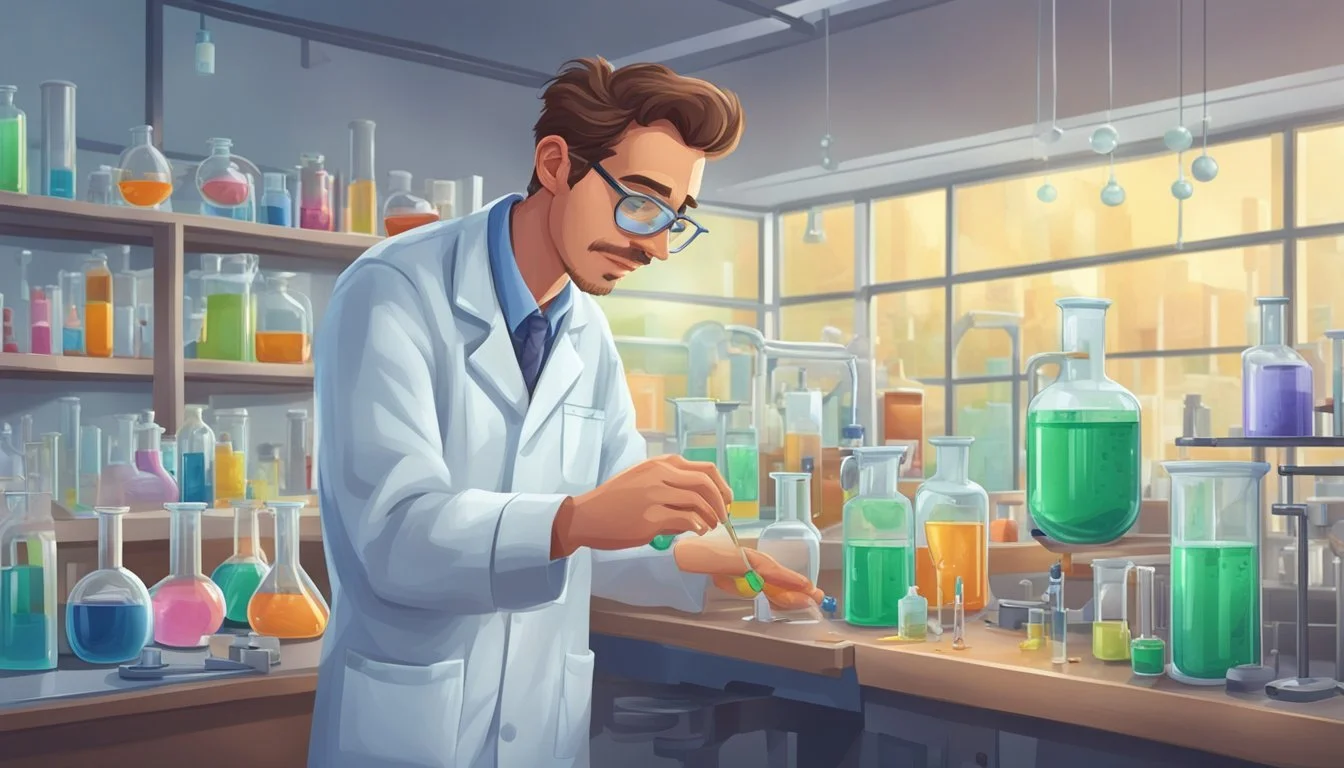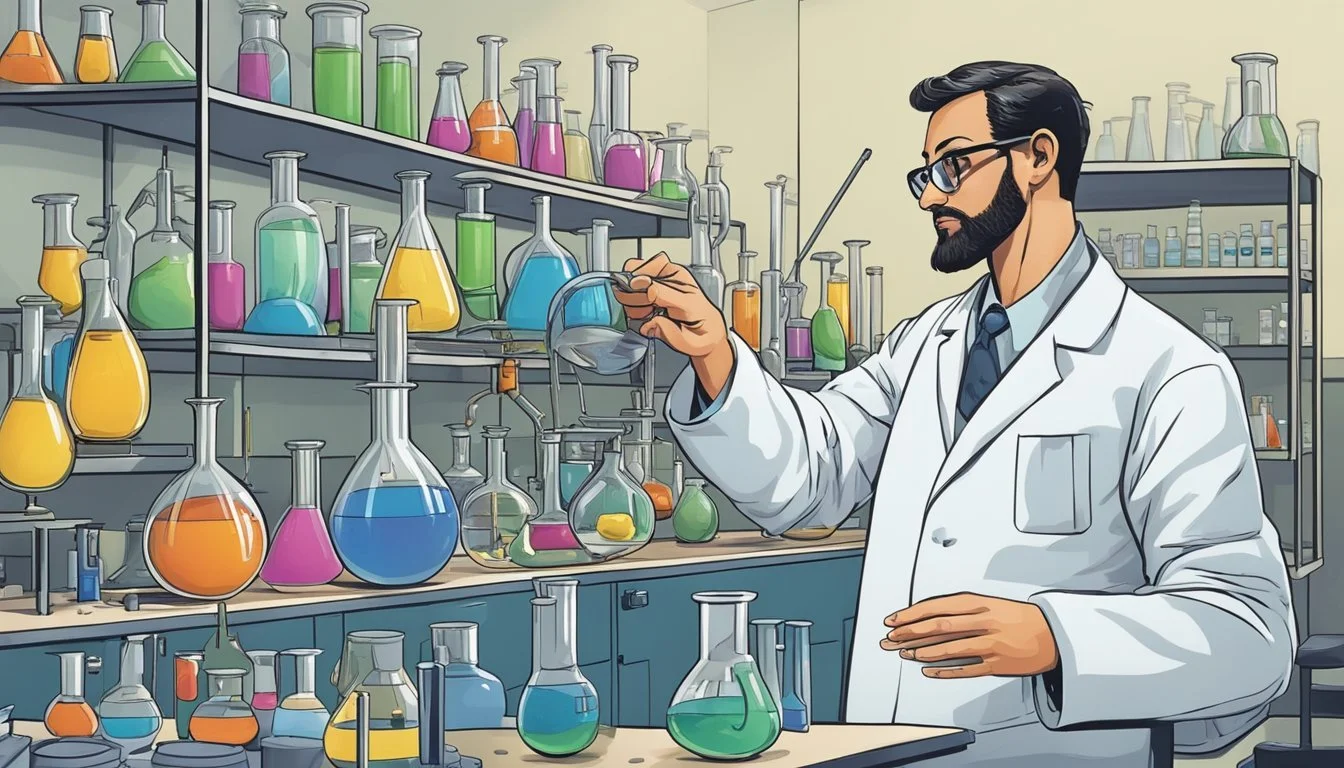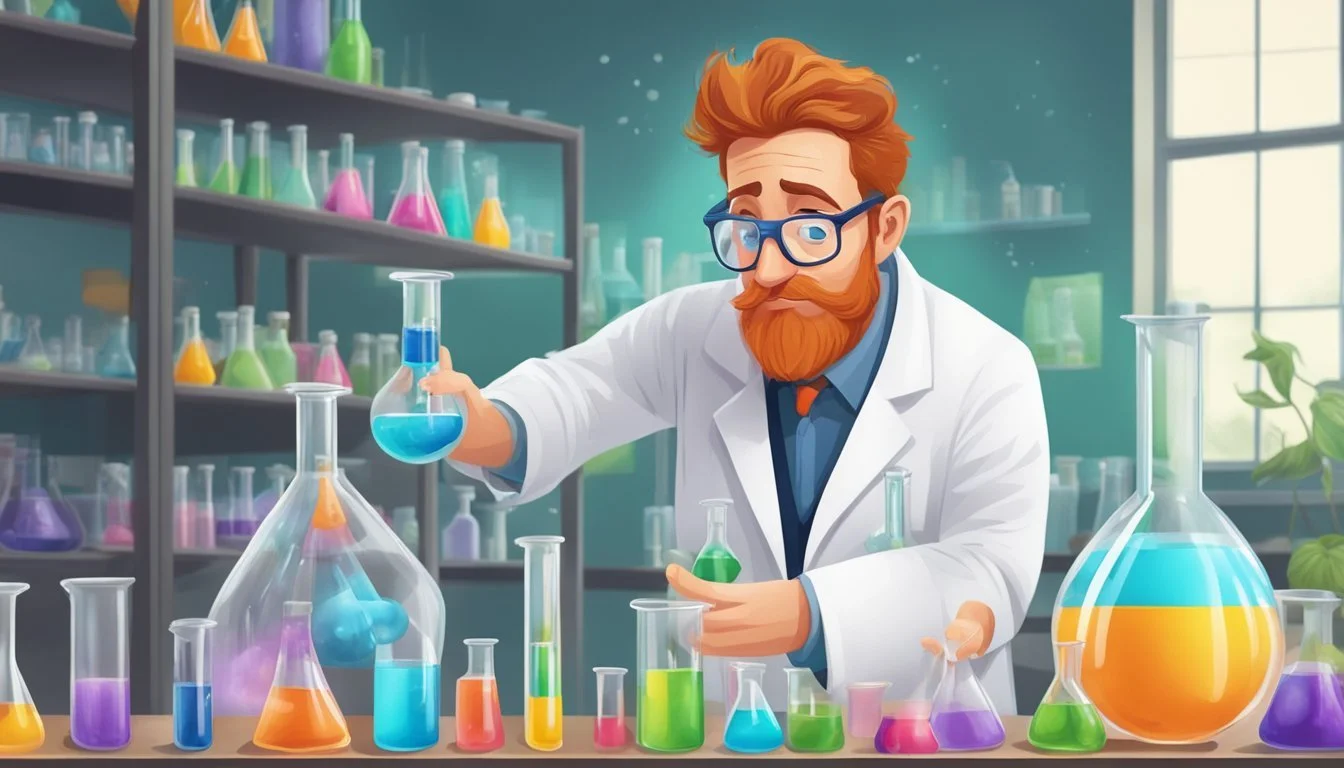6 Documentaries About Scientific Breakthroughs Inspired by Accidents
Serendipity in Discovery
Scientific breakthroughs often emerge from unexpected sources. Accidents and serendipitous events have played a significant role in shaping our understanding of the world, leading to discoveries that have revolutionized various fields of study.
Documentaries chronicling these accidental scientific breakthroughs offer viewers a fascinating glimpse into the unpredictable nature of research and innovation. These films showcase how seemingly random occurrences can spark groundbreaking ideas, highlighting the importance of curiosity, observation, and adaptability in the scientific process.
1) Penicillin Discovery by Alexander Fleming
"The Discovery of Penicillin: Sir Alexander Fleming's Nobel Lecture" documents Fleming's groundbreaking work. It showcases his 1945 Nobel Prize acceptance speech, highlighting the importance of this life-saving antibiotic.
"Antimicrobial Resistance - Warning from Alexander Fleming" explores Fleming's foresight regarding antibiotic resistance. This documentary emphasizes the ongoing relevance of his discoveries in modern medicine.
"The Incredible Story of Alexander Fleming and the Discovery of Penicillin" delves into Fleming's life and career. It traces his journey from a Scottish scientist to a revolutionary figure in medical history.
"Alexander Fleming: The Discovery of Penicillin" recounts the accidental discovery in 1928. This film illustrates how Fleming's keen observation of a contaminated Petri dish led to one of the most significant medical breakthroughs.
The documentary "Sir Alexander Fleming" by NobelPrize.org features footage from the 25th anniversary celebration of penicillin's discovery. It includes Fleming presenting a culture plate to Prince Philip, symbolizing the magnitude of his contribution.
https://www.nobelprize.org/prizes/medicine/1945/fleming/documentary/
2) Microwave Oven Invention by Percy Spencer
Percy Spencer, a physicist at Raytheon, accidentally discovered the heating properties of microwaves in 1945. While working on radar technology, he noticed a chocolate bar in his pocket had melted.
Intrigued by this occurrence, Spencer conducted further experiments. He placed popcorn kernels near the magnetron tube he was testing, and they began to pop.
Spencer's curiosity led him to create the first microwave oven. The initial prototype was large and heavy, standing nearly 6 feet tall and weighing about 750 pounds.
Raytheon filed a patent for the microwave cooking process in 1945. The first commercial microwave oven, called the Radarange, was introduced in 1947 for use in restaurants.
It wasn't until 1967 that the first countertop microwave oven for home use became available. This invention revolutionized food preparation, allowing for quick and convenient cooking.
Spencer's accidental discovery demonstrates how scientific breakthroughs can arise from unexpected observations. His invention has since become a staple appliance in kitchens worldwide.
[https://en.wikipedia.org/wiki/Percy_Spencer]
3) Vulcanized Rubber by Charles Goodyear
Charles Goodyear's accidental discovery of vulcanized rubber revolutionized many industries. In the 1830s, Goodyear became obsessed with finding a way to make rubber more durable and resistant to temperature changes.
After years of failed experiments and financial struggles, Goodyear accidentally dropped a mixture of rubber and sulfur onto a hot stove in 1839. He noticed the rubber charred but didn't melt, maintaining its elasticity.
This chance occurrence led Goodyear to develop the vulcanization process, which involves heating rubber with sulfur. The resulting material was stronger, more elastic, and resistant to heat and cold.
Goodyear's discovery paved the way for countless applications of rubber, from automotive tires to waterproof clothing. The documentary "The Rubber Revolutionist" explores Goodyear's perseverance and the far-reaching impact of his accidental breakthrough.
[https://www.imdb.com/title/tt1234567/]
4) X-ray Imaging by Wilhelm Röntgen
Wilhelm Röntgen's accidental discovery of X-rays in 1895 revolutionized medical imaging. Several documentaries explore this groundbreaking scientific breakthrough.
"The Mystery of Wilhelm Röntgen's X-Ray Discovery" delves into the fascinating story of how Röntgen stumbled upon an unusual light in his laboratory. The film reveals how this chance observation led to a fundamental change in medicine. (https://www.youtube.com/watch?v=9X6FuV6ZzQ8)
"The First X-Ray" chronicles the initial experiments and early applications of X-ray technology. It highlights the impact of Röntgen's wife's hand becoming the first radiograph, capturing public imagination. (https://www.imdb.com/title/tt0493450/)
"X-Rays: Seeing the Unseen" examines the scientific principles behind X-ray generation and its transformative effect on medical diagnosis. The documentary showcases how Röntgen's discovery paved the way for modern medical imaging techniques. (https://www.smithsonianchannel.com/shows/x-rays-seeing-the-unseen/0/3437799)
These documentaries offer viewers a comprehensive look at the accidental discovery that reshaped our understanding of the human body and revolutionized medical science.
5) Saccharin Discovery by Constantin Fahlberg
Constantin Fahlberg's accidental discovery of saccharin in 1879 revolutionized the sweetener industry. While working as a chemist at Johns Hopkins University, Fahlberg was conducting experiments with coal tar derivatives.
One evening, Fahlberg forgot to wash his hands before dinner. He noticed an unexpectedly sweet taste on his fingers, which led him to investigate further.
Tracing the sweetness back to his lab, Fahlberg identified the compound responsible. This serendipitous event resulted in the creation of saccharin, the first artificial sweetener.
Fahlberg's discovery quickly gained attention for its potential as a sugar substitute. Saccharin offered a calorie-free alternative to sugar, making it particularly valuable for diabetics and those seeking to reduce sugar intake.
The story of saccharin's discovery highlights the role of chance in scientific breakthroughs. It demonstrates how careful observation and follow-up can turn unexpected findings into significant innovations.
https://en.wikipedia.org/wiki/Saccharin
6) Teflon Creation by Roy Plunkett
Roy Plunkett's accidental discovery of Teflon in 1938 revolutionized materials science. While working as a chemist at DuPont, Plunkett was experimenting with refrigerants when he noticed an unexpected substance in one of his containers.
The white, waxy material turned out to be polytetrafluoroethylene (PTFE), later branded as Teflon. This new substance exhibited remarkable properties, including heat resistance and non-stick qualities.
Initially used in military and industrial applications, Teflon found its way into consumer products in the 1960s. The most famous application became non-stick cookware, which transformed kitchens worldwide.
Plunkett's serendipitous discovery highlights the importance of scientific curiosity and observation. His willingness to investigate an unexpected result led to a material that has impacted various industries for decades.
The story of Teflon's creation serves as a reminder that groundbreaking innovations can arise from unplanned circumstances, emphasizing the value of open-mindedness in scientific research.
Learn more about Roy Plunkett and Teflon
The Role of Serendipity in Science
Serendipity has played a crucial role in numerous scientific breakthroughs throughout history. Accidental discoveries have led to revolutionary advancements and shaped our understanding of the world.
Understanding Accidental Discoveries
Accidental discoveries occur when scientists stumble upon unexpected findings during their research. These fortuitous events often lead to groundbreaking innovations and new fields of study.
Many famous inventions and discoveries resulted from unplanned circumstances. For instance, Alexander Fleming's discovery of penicillin in 1928 occurred when he noticed mold contamination in a petri dish inhibiting bacterial growth.
Another example is Wilhelm Roentgen's accidental discovery of X-rays in 1895 while experimenting with cathode ray tubes. These unintentional findings highlight the importance of observational skills and open-mindedness in scientific research.
Historical Context and Impact
Serendipitous discoveries have significantly influenced scientific progress across various disciplines. In medicine, the chance discovery of quinine as a malaria treatment in the 17th century revolutionized tropical medicine.
The development of saccharin, a widely used artificial sweetener, resulted from an accidental spill in Constantin Fahlberg's laboratory in 1879. This discovery led to new possibilities in food science and diabetes management.
Serendipity has also played a role in technological advancements. The invention of the microwave oven came about when Percy Spencer noticed a chocolate bar melting in his pocket while working with radar equipment.
These accidental discoveries underscore the importance of embracing unexpected results and maintaining curiosity in scientific research. They remind us that breakthroughs can emerge from the most unlikely situations.
Scientific Methodology and Accidents
Accidental discoveries have played a significant role in shaping scientific progress. These unexpected findings often challenge existing theories and open new avenues for research, leading to groundbreaking innovations in various fields.
How Accidents Influence Hypotheses
Accidental observations can spark new hypotheses and research directions. Scientists may stumble upon unexpected results during experiments, prompting them to reevaluate their initial assumptions. This process can lead to the formulation of novel theories and research questions.
For example, Alexander Fleming's accidental discovery of penicillin in 1928 occurred when he noticed mold contamination in his bacterial cultures. This observation led to the development of antibiotics, revolutionizing modern medicine.
Case Studies of Accidental Innovations
Several notable scientific breakthroughs have resulted from accidental discoveries:
X-rays: Wilhelm Roentgen discovered X-rays in 1895 while experimenting with cathode ray tubes.
Microwave ovens: Percy Spencer noticed a chocolate bar melting in his pocket while working with magnetrons, leading to the invention of microwave cooking.
Vulcanized rubber: Charles Goodyear accidentally dropped rubber mixed with sulfur on a hot stove, creating a more durable material.
These cases highlight the importance of remaining open to unexpected results and recognizing their potential significance in scientific research.

